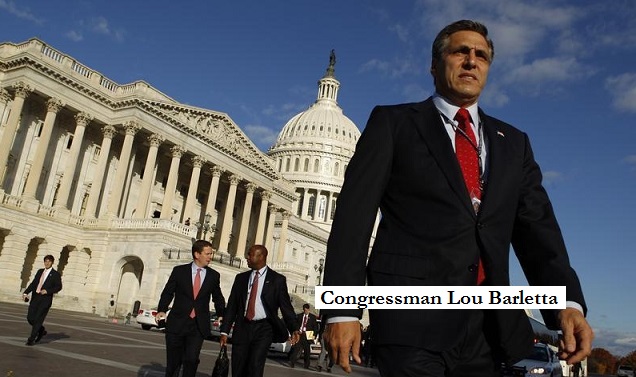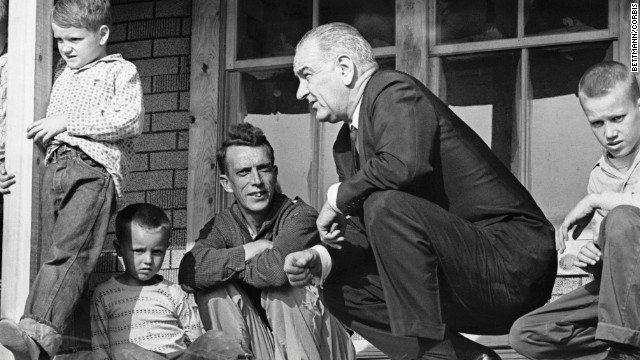The chief purpose of the Common Core State Standards (CCSS) initiative was to develop a “common core” of ELA and math standards that states (ideally all) would adopt so that state education might be standardized and therefore comparable using similar assessments.
At the center of CCSS development was Student Achievement Partners (SAP), an organization created in 2007 that became a nonprofit in 2011 (EIN 27-4556045). SAP was founded by David Coleman and Jason Zimba, with Susan Pimentel later grafted in as a founding member– although any mention of her being involved in SAP prior to the emergence of completed CCSS in June 2010 is notably absent from all of her pre-2012, non-SAP bio sketches. (I briefly discuss the Pimentel SAP-founder grafting in this December 2013 post.)
On its 2017 “about” page, SAP offers the following info about its “founders”:
Student Achievement Partners was founded by David Coleman, Susan Pimentel and Jason Zimba, lead writers of the Common Core State Standards.
Prior to SAP, the well-connected Coleman had another ed org, a company called Grow Network, which had a $2 million contract with Chicago Public Schools (CPS) in 2003, when Arne Duncan was CPS CEO. In 2004, Coleman sold Grow Network to McGraw-Hill.
Following the completion of CCSS in June 2010, the SAP website, achievethecore.org, began promoting CCSS. At the time, it seemed like CCSS would be the next golden chariot for many with careers tied to ed reform, and for Coleman, it was, sort of. In May 2012, Coleman became president of the College Board, another organization on the inside of CCSS development. Zimba and Pimentel remained with SAP, and other CCSS “lead writers” (Phil Daro and Bill McCallum) boarded the SAP ship, as did former Council of Chief State School Officers (CCSSO) CEO, Gene Wilhoit. (It was Wilhoit who, with Coleman, approached billionaire Bill Gates in 2008 and asked him to finance CCSS.)
It is one thing to become College Board president; it is another to succeed at it. Under Coleman, the College Board has been riddled with difficulty and dysfunction, not the least of which is Coleman’s sloppy SAT revamp. Coleman has not been removed as College Board president. Not yet, at least.
As for Pimentel and Zimba: They are still listed on the SAP website, as “staff,” but nothing notable seems to have become of them (or of the CCSS they championed, for that matter). According to SAP’s 2014 tax form (the most recent one available), Pimentel and Zimba were SAP “executive directors” and were paid $338,491 and $331,813 in total compensation, respectively.
It remains to be seen what compensation the two pulled in 2015. Perhaps the grant money was still rolling in at that time. Perhaps it had not yet tapered off. (An aside: In 2014, SAP had $9.5 million in total assets at the beginning of the year and $6.5 million at the end.)
Zimba has a blog, the bio on which betrays no job beyond defunct SAP. Zimba’s blog is the most recent contribution available by Zimba via a Google search of his name. Everything else written by Zimba appears to be years old.
As for Pimentel, it looks like she is serving on the board of an organization she founded, StandardsWork. However, the StandardsWork “in the news” page has not been updated since June 2015. Like Zimba, Pimentel is likely continuing to draw money from SAP.
Pimentel’s current StandardsWork bio has her as a founding partner of SAP; however, an archived copy of her StandardsWork bio from 2010– three years after the 2007 founding of SAP– doesn’t mention SAP at all.
A Google search of Susan Pimentel reveals no recent (i.e., in 2016) writing or other professional productivity or employment.
On SAP’s 2014 tax form, Wilhoit was listed as a “partner”; he drew $145,577 in total compensation. Wilhoit is still with SAP as a board member and is also with the University of Kentucky (UK) National Center for Innovation in Education (NCIE), which Gates paid one million dollars in February 2013 to help launch expressly “to advance implementation of the common core.”
NCIE continues to promote CCSS, with Wilhoit “spearheading” it:
The National Center for Innovation in Education was established in 2013 at the University of Kentucky College of Education with funding from two of the country’s leading foundations — the Bill & Melinda Gates Foundation and the William and Flora Hewlett Foundation.
The center is directed by Gene Wilhoit, a former Kentucky Department of Education commissioner who is a highly regarded figure in national education circles. Wilhoit most recently spent six years as director of the Council of Chief State School Officers (CCSSO) in Washington D.C. During his tenure at CCSSO, Wilhoit spearheaded the development and adoption by 45 states of the Common Core State Standards.
“The Hewlett Foundation has been pleased to support ongoing deeper learning initiatives across the country. We are excited now to partner with the Gates Foundation to help Gene Wilhoit establish this important center at the University of Kentucky,” said Barbara Chow, director of the William and Flora Hewlett Foundation’s Education Program. “States from around the nation will benefit from Gene’s wisdom, experience, and vision for ensuring that U.S. education delivers and measures the knowledge, skills, and dispositions students will need to succeed in work, life, and citizenship.”
The National Center for Innovation in Education contributes to the national education reform agenda with a focus on ensuring more states are adopting and implementing a standard definition of college and career readiness that embodies “deeper learning” outcomes, implementing meaningful measures of those outcomes, and holding all levels of the system accountable for results. [Emphasis added.]
In November 2016, Gates gave UK another $5 million “to support system-wide shifts, working with both state and local levels, around the implementation of the Common Core, and the adoption of personalized and deeper learning strategies.”
Gates has not given up on CCSS, but he has considerably curbed his CCSS spending. Of the 10 CCSS-related grants Gates paid in 2016, only 3 are for national organizations to promote CCSS nationally; in July 2016, the Center for American Progress was given $1 million “to increase support for and reduce opposition to the Common Core and high-quality assessments, and to promote high-quality early childhood education through strategic advocacy efforts that bring new voices into the early childhood movement,” and in August 2016, New Venture Fund garnered $7.6 million “to support national communications work around Common Core, high-quality and aligned assessments, and ESSA implementation.”
As for SAP, well, its message about the Common Core actually being a “core” has been modified to return to what the Common Core was supposed to replace– variety among states when it comes to academic standards in ELA and math.
Here is how SAP stated its purpose in September 2013:
Student Achievement Partners was founded by members of the same team that played a leading role in the development of the new Common Core State Standards. We are a non- profit organization with one purpose: to help all students and teachers see their hard work lead to greater student achievement.
As educators, as researchers, and as citizens, we view the changes brought by the college and career readiness focus of the Common Core State Standards as a once-in-a-generation opportunity for kids of all backgrounds and ability levels to better fulfill their potential. Like the standards themselves, we are evidence-based in our approach. Our work is aimed at ensuring that teachers across the country are able to put the standards to work, quickly and effectively, to help their students and colleagues aspire to a higher standard and reach it. Accordingly, the content available on this site is assembled by and for educators and is freely available to everyone to use, modify and share.
We invite educators and people curious about the Common Core State Standards to explore what the site has to offer, including hundreds of math and literacy resources for teachers, resources for leaders who are putting college and career readiness standards into action in their own schools, and opportunities to become an advocate for the Common Core. [Emphasis added.]
SAP’s purpose page remained the same in September 2014, January 2015, February 2015, and March 2015, but by June 2015, the SAP story of “the Common Core State Standards as a once-in-a-generation opportunity for kids of all backgrounds and ability levels to better fulfill their potential” was modified to make room for cries to dump CCSS:
Student Achievement Partners was founded by David Coleman, Susan Pimentel and Jason Zimba, lead writers of the Common Core State Standards. We are a non-profit organization with one purpose: to help all students and teachers see their hard work lead to greater student achievement.
As educators, as researchers, and as citizens, we view the changes brought by the Common Core and other state standards with a similar focus on college and career readiness as a once-in-a-generation opportunity for kids of all backgrounds and ability levels to better fulfill their potential. Like the standards themselves [Schneider’s note: “The” standards? Which standards?], we are evidence-based in our approach. Our work is aimed at ensuring that teachers across the country are able to put the standards to work, quickly and effectively, to help their students and colleagues aspire to a higher standard and reach it. Accordingly, the content available on this site is assembled by and for educators and is freely available to everyone to use, modify and share.
We invite educators and people curious about the Common Core State Standards to explore what the site has to offer, including hundreds of math and literacy resources for teachers, resources for leaders who are putting college and career readiness standards into action in their own schools, and opportunities to become an advocate for the Common Core and college and career readiness for all students. [Emphasis added.]
So, the SAP purpose went from promoting “common” to promoting common and not common, as well.
Moreover, SAP appears stagnant.
SAP’s last “in the news” release is from March 2015– almost two years old as of this writing. An excerpt:
- 2015-03-17 | STUDENT ACHIEVEMENT PARTNERS
New Teaching the Core Video Library Created
Student Achievement Partners is delighted to announce the launch of the Teaching the Core Video Library, a project supported by the Danielson Group and funded by The Leona M. and Harry B. Helmsley Charitable Trust.
The previous SAP “in the news” entry is two years old, from January 2015:
Jason Zimba: The Common Core and Different Instructional Approaches
Jason Zimba, one of the lead writers of the Common Core and co-founder of SAP, has written a blog post entitled: When the Standard Algorithm Is the Only Algorithm Taught. The blog addresses the relationship between the Common Core and pedagogy, specifically looking at the way in which the Standards allow for different instructional approaches.
The SAP website appears to have modest traffic, especially given that it offers free CCSS materials. According to the web traffic tracker, Similarweb, achievethecore.org has not received as much traffic for any two-weeks over a 6-month period (July 11 thru November 28, 2016) as has education historian, Diane Ravitch’s site, dianeravitch.net.
Readers are still visiting the SAP website; however, it seems that visits to the site are more like visits to a museum. The SAP home page has a “new and notable” sidebar with its most recent entry dated February 2016– almost a year old.
Thus, the organization at the center of CCSS development in 2009– Student Achievement Partners– is at best in 2017 a once-well-funded fizzle.
RELATED ARTICLE: How Colorado parents were threatened, ignored, and deceived by school officials after exposing hardcore pornography available via middle school’s Internet portal.








![rpcLogoSmall [Converted]](https://refugeeresettlementwatch.files.wordpress.com/2017/01/rpclogosmaller2.jpg?w=300&h=64)
















 If as time goes on and you know I wrote about refugee numbers, but can’t find the post, you can always go to the category here at RRW called
If as time goes on and you know I wrote about refugee numbers, but can’t find the post, you can always go to the category here at RRW called 



